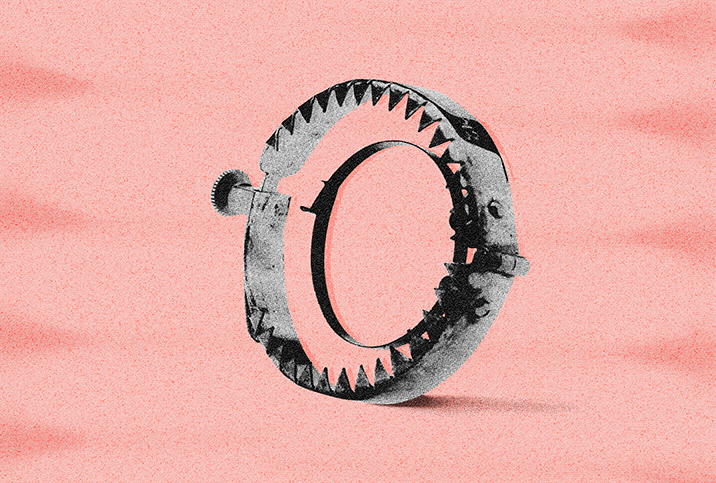A Throwback to Anti-Masturbation Devices

If you took a time machine, traveled to the Victorian era and tried to tell people masturbation is normal or might be beneficial to a certain degree, your claims would be shot down by the medical experts and academic literature of the time.
Current American culture has a generally sex-positive attitude. Pornography is widespread and access to it has never been so easy, thanks to the internet. While masturbation might be seen by some people as mildly shameful, it is largely normalized and accepted.
But people back in the day—Britain's Victorian era spanned approximately 1820 to 1914—believed masturbation led to medical concerns, and "treatment" sometimes included genital mutilation.
A big medical concern
"Masturbation often went hand in hand with judgment at a moral level, which naturally led to some outlandish medical assumptions and concerns along with it," said Lisa Selby, B.Sc. (Hons), who has a degree in health psychology and is the head of content at Adults Toy Guide. "For example, masturbation was thought of as a form of abuse to the self, with some medical voices of the time going as far as to suggest it was linked to a diagnosis of insanity, due to the thought of self-abuse being such a 'sin.'"
The anti-masturbation movement and the widespread adoption of these views penetrated the entire society. For example, William Mackenzie, M.D., who was Queen Victoria's surgeon-oculist, published the following in 1843 in the Edinburgh Medical and Surgical Journal:
"Masturbation is often followed by loss of appetite, indigestion, headache, vertigo, tinnitus aurium, rigors, flushings, constant clamminess of the hands, want of sleep, signs of congestion or chronic inflammation of the brain, apoplectic symptoms, palpitation of the heart and emaciation, leading to a suspicion of phthisis. Palsy and insanity are not infrequent consequences of masturbation."
Naturally, with masturbation being such a "threat" to public health, solutions needed to be brought forward. After all, the temptation to masturbate was powerful. Young men who couldn't resist were destined for mental, spiritual and physical suffering, or so people believed.
Medical devices began appearing to help troubled souls kick their awful, self-abusing habit of masturbation. Many of these devices shared a common approach: to stop erections from happening in the first place. Unfortunately, what medical experts deemed as the best way to prevent masturbation was by subjecting men to what can only be described as torture. Essentially, devices were designed to ensure any potential erection would be suppressed and any thought of masturbation would be buried in pain.
The majority of these devices were akin to torture chambers; some even had metal spikes or teeth meant to stab any penis daring enough to get erect. One of these devices was the popular jugum penis, which was fashioned out of a jagged metal ring that could be attached to the penis with a clip and commonly prescribed by doctors trying to save their patients from being afflicted with spermatorrhoea, a Victorian-era term for nocturnal emissions.
Women were affected, too
Men were not the only ones affected by Victorian society's fear and misguided beliefs concerning the act of masturbation. Women weren't quite off the hook, either. Granted, the anti-masturbation medical device industry wasn't as brutal to women, who were instead offered chastity belts made of cloth or leather.
But grim accounts of the way doctors treated female masturbation are definitely shocking in this day and age. A small subset of Victorian-era gynecologists viewed female masturbation with such strong disdain they opted for genital mutilation.
"Isaac Baker Brown, a leading gynecologist at the time, actually performed clitoridectomies on women. Cultural shame was prevalent, with the public understanding what the consequences were if they continued or had invasive thoughts," Selby explained.
More anti-masturbation devices
Besides the jugum penis, there were a number of other devices on the market, and one of them was even invented by a woman. In 1907, Ellen E. Perkins filed a patent for her "sexual armor," which was essentially a body suit made of cloth and fashioned with metal plates to shield the penis area. Yikes!
One of the most painful devices was the four-pointed urethral ring, which was intended to be as torturous as possible. This ring is similar to the jugum penis but much more agonizing and excruciating to its wearers because of its steel spikes.
It might be easy to dismiss Victorian society's views on masturbation as ignorant and savage. However, remember those views were supported by the medical establishment of the time. As absurd as it may appear to us, people of the time were up against the views of doctors and scholars. From this perspective, the Victorian era and its anti-masturbation devices show us the impact and dangers of medical misinformation when it captures the imagination of a society.

















